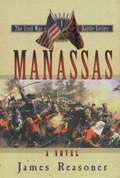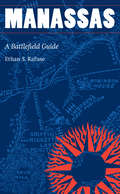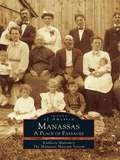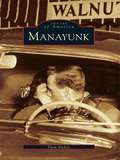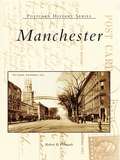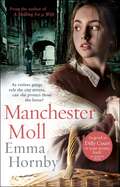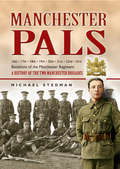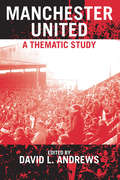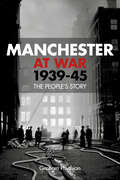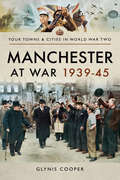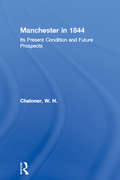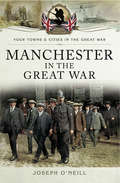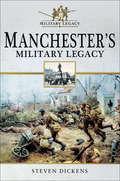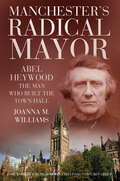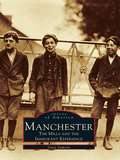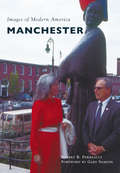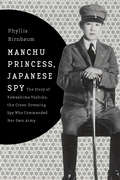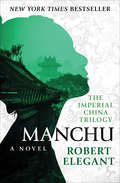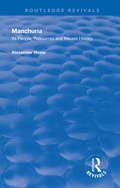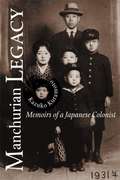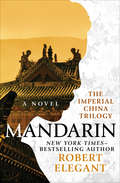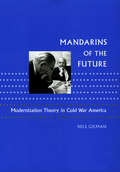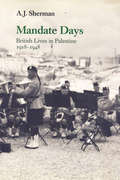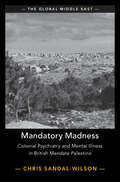- Table View
- List View
Manassas (The Civil War Battle Series, Book #1)
by James Reasoner[FROM THE BACK COVER] THE YANKEE seemed to be unarmed, but he was determined to kill Will with his bare hands. His fingers locked around Will's throat. He had one knee on Will's chest, pinning him to the ground. Will tried to throw the man off, but the Yankee's weight was too much. He was leaning over Will so that his grimacing face was only a foot away from Will's. Suddenly, the Yankee stiffened, and his mouth opened and blood welled out. Will saw the point of a bayonet protruding an inch or so from the center of the man's chest. He fell to the side as his eyes began to glaze over. Darcy Bennet yanked his bayonet out of the Yankee's body and bent over Will to offer him a hand. "Come on, Cap'n," he said, raising his voice to be heard over the chaos. "Are you all right?" Coughing a little as he dragged air through his abused throat, Will nodded. "Thanks, Darcy," he rasped. He looked around for the dun. "Your horse run off," said Darcy. "Don't know where he got off to-" Suddenly, a thudding sound interrupted Darcy, and the big sergeant stumbled back a step. Will looked at him in horror as Darcy slowly lifted a hand and pressed it to his chest. "Lordy," Darcy gasped in a hollow voice. "I'm hit." Then he fell over backward, a dark bloodstain spreading under the widespread fingers of his hand. "Darcy!" Will yelled as he dropped to his knees next to the sergeant. "Damn it, Darcy-" "Brannon!" Will couldn't believe his ears. He turned his head and saw a familiar figure standing ten feet away. Something had happened to Ransom Fogarty's cap during the battle, uncovering his ginger-colored hair. Smoke curled from the barrel of the rifle in his hands. His ugly freckled face split in a grin as he sneered, "I won't miss with this bayonet, Brannon!"
Manassas: A Battlefield Guide (This Hallowed Ground: Guides to Civil War Battlefields #No. 7)
by Ethan S. RafuseThis volume is the essential guide to the Manassas battlefields, site of two of the Civil War’s critical campaigns. Ethan S. Rafuse, a distinguished scholar of the Civil War, provides a clearly organized, thorough, and uniquely insightful account of both campaigns, along with expert analysis and precise directions for armchair traveler and battlefield visitor alike.The July 1861 Battle of First Manassas and the August 1862 Battle of Second Manassas unequivocally influenced the course and outcome of the Civil War. The first battle dealt a decisive blow to hopes that the inexperienced armies of the North and the South could bring about a quick military resolution of the secession crisis. The second battle was the climactic engagement of a spectacular campaign that carried the war to the outskirts of Washington DC and marked the coming of age of Robert E. Lee’s Army of Northern Virginia. Manassas: A Battlefield Guide presents readers with a clear, convenient guide to the sites in northern and central Virginia that shaped the course and outcome of these campaigns. Lucid, concise narratives give readers a better understanding of the events that took place on these battlefields and of the terrain, personalities, and decisions that shaped them.
Manassas: A Place of Passages
by Kathleen Mulvaney The Manassas Museum SystemWith its humble beginnings as a small train junction in Virginia's northern piedmont region, Manassas has evolved from a traditional rural community into a leading city of the New South, serving as a focal point for new businesses and growth outside of our nation's capital. Though the Civil War left an indelible mark on the character of Manassas, the area's citizens and post-war newcomers were able to begin anew, building a progressive town, full of promise and hope, upon the four-year conflict's ashes and battle-scarred landscape. In Manassas: A Place of Passages, this historic town comes alive, allowing the reader to take an entertaining and educational visual journey from the early days of the "Iron Horse" at Manassas Junction in the mid-nineteenth century to a more prosperous Manassas in the early twentieth century, when the streets were newly paved and lined with family-owned businesses. This comprehensive volume touches upon every facet of community life: schools, such as the Manassas Institute and the Manassas Industrial School for Colored Youth; the town's many historic churches, which were acknowledged, at one time, by Ripley's Believe It or Not!; several prominent families and civic leaders; and general scenes of people participating in recreational activities, from piano lessons and plays to athletic teams and parades.
Manatee County (Images of America)
by Jim WigginsThe area known as Manatee County opened for settlement at the close of the Second Seminole War in 1841. This was due to Congress's passage of the Armed Occupational Act of 1842, which allowed settlers to claim 160 acres of land at a cost of $1.25 an acre if they were able to bear arms and live on the land for five years. It wasn't long before settlers appeared up and down the beautiful Manatee River, led by Josiah Gates and his family on the south side. Many of his friends had suffered losses with the collapse of the Union Bank in Tallahassee and were anxious to join him. The opulent shores on both sides of the river quickly enticed other settlers to make their claims, offering a cornucopia filled with some of Florida's best resources for growth and prosperity. This volume provides a pictorial account of those lives, which were caught in the struggle to carve out a niche against all odds in a place that faced epidemics of yellow fever, malaria, typhoid, and a third uprising of the Seminole Indians. In 1861, Florida seceded from the Union, which was followed by the Civil War with a Union victory in 1865 that brought an end to slavery and plantation ownership.
Manayunk
by Thom NickelsManayunk, the Native American word for "place where we drink," was first explored by Dutch and English surveyors in the late seventeenth century. These early explorers found the area, which expands upward from the banks of the Schuylkill River, to be quite fascinating. In later years, Manayunk's rolling hills, slanting lawns, and clusters of houses, mills, and church spires stood out and made the neighborhood a unique section of Philadelphia, reminiscent of Italy or southern France. Manayunk explores the growth of the region from a river town with a population of sixty to its rise as "the Manchester of America," akin to the British town of the same name. A manufacturing mecca noted for its mills along its immigrant-dug canal, Manayunk has an indomitable spirit that helped the town triumph over floods and the Depression of 1929. A place of fascinating oddities, one of the first buildings in Manayunk was a gin mill. Manayunk looks at the building of the grand canal, which in 1825 was filled with arks and square-toed flat-bottomed boats. In the summer, the canal became a roughshod rendition of Venice, with its long boats pointed at both ends carrying grains and produce while being poled up the canal by Philadelphia gondoliers. Also illustrated is the construction of the elevated Reading Railroad line and the disarray this engineering feat brought to the town. Notable citizens, such as Capt. John Towers ("the Father of Manayunk"), members of the Levering family, Samuel Streeper Keely, Sevill Schofield, James Milligan, and William B. Nickels, are also profiled.
Manchester
by Robert B. PerreaultHere, for the first time exclusively through the medium of vintage postcards, the people, streets, businesses, institutions, and recreational areas of bygone Manchester return to life. Manchester presents images of the world's largest producer of textiles, which attracted a patchwork of cultures from many lands. It tells where the first telephone conversation by a U.S. president occurred. It evokes the city that colorful individuals such as a nearly lifelong hermit, the smallest married couple in the world, a famous comic strip cartoonist, a best-selling novelist, the founders of cosmetics and fast-food empires, and a comedic superstar all called home.
Manchester Moll
by Emma Hornby**Don't miss Emma Hornby's gripping new wartime saga, A DAUGHTER'S WAR - out now**----------------------------Moll thought she could keep her family safe . . .Eighteen-year-old Moll Chambers works her fingers to the bone doing all she can to support her family. With an ailing father and a wayward mother, Moll is the only one who can look after her siblings, Bo and Sissy. But Manchester is an increasingly dangerous place to live, overrun with a ferocious rivalry between gangs of so-called 'scuttlers': young men and women bent on a life of violence and crime. And they have her brother in their sights. Soon even Moll can't protect Bo from the lure of the criminal underworld. Then the scuttlers looked her way. When she herself falls for the leader of a rival gang, Moll's choices place her and Bo firmly on opposite sides of the city's turf war. With her loyalties now torn in two, and tragedy lurking round every corner, will Moll be able to rise above the conflict and protect those she loves the most? Or will stepping out with a scuttler spell ruin for them all . . . ?MANCHESTER MOLL is an absorbing saga that will tug at your heartstrings. Fans of Dilly Court, Rosie Goodwin and Maggie Hope will love Emma Hornby.----------------------------Readers love Emma Hornby:'Similar to Rosie Goodwin and Dilly Court, Emma Hornby tells a brilliant story that will keep you guessing with twists and turns. Pure talent.''Emma Hornby's books just keep getting better and better. Honest, gritty, lovely characters.''Keep writing Emma, you are very talented and can't wait for your next book. I've read them all.''Emma is a wonderful storyteller and I can't wait for the next one!''Thank you again Emma Hornby for a captivating read''Another beautifully written story by Emma Hornby'
Manchester Pals: A History of the Two Manchester Brigades
by Michael StedmanUnlike its near neighbour, working-class Salford, Manchester proved able to raise eight Pals battalions. Initially, these battalions were composed of middle-class men who experience before the war years was within the commercial, financial and manufacturing interests which formed the foundations of Edwardian Manchesters life and prosperity. Manchester was undeniably proud of its pals battalions; that the area was capable of raising. Seven months after their arrival in France the battle of the Somme was launched, on the fateful 1st July, 1916. On the right of the British Armys extraordinary efforts that day, the Manchester Pals were part of one of the few successful actions, taking the villages of Montauban and Mametz and making a deep incursion into the German defences north of the River Somme.
Manchester United: A Thematic Study
by David L. AndrewsDespite myriad popular and journalistic expositions, up to this point there have been virtually no academic discussions of the Manchester United phenomenon. This anthology represents the first concerted academic examination of Manchester United F.C. in its current guise as a widely followed and highly emblematic sporting institution.Bringing together respected academics from an array of disciplinary backgrounds these essays each interrogate various related dimensions of the Manchester United world. The primary aim of this collection is to illustrate how the structure and experience of Manchester United is implicated in broader societal shifts, within which the boundary between cultural and commercial concerns have become increasingly indivisible.The chapters are presented within five thematic sections:1 Becoming United2 Economy United3 Embodied United4 Local United 5 Global United
Manchester at War 1939-45: The People's Story
by Graham PhythianThis new book is a remarkable and moving account of life on the home front in Manchester during the Second World War. Based on transcripts of recorded interviews with senior civilians and former members of the Armed Services, this book provides a first-hand narrative of what it was like to live under the shadow of war. The everyday hardships and heroism are recalled: the Blitz, rationing, the Home Guard, evacuees, war work, and the American presence prior to D-Day. Despite all the tragedy and difficulties, the Mancunian spirit shines through with the frequent dash of unquenchable humour. Richly illustrated, and filled with true accounts of local heroism and of the unbreakable spirit of the people of Manchester during these tumultuous years, this book looks at how the city fared during the Second World War, played her part in victory, and how the day-to-day life of her people was affected.
Manchester at War, 1939–45 (Your Towns And Cities In World War Two Ser.)
by Glynis CooperFew could believe that within twenty years of the war to end all wars being wonthe world was once more at war. Veterans of the Great War feared going throughthe same horrific experience again and, even worse, many knew that this time theirchildren would also be involved in the fighting. What had all the sacrifice been for?Manchester had been badly hit by the Great War with many lives lost, familiesripped apart, industries destroyed. The cotton industry never recovered; especiallysince Japan, China and India offered cheaper cotton goods. Building and economicrecovery had been hindered by the Great Depression.The city was not ready to face another war, nor for the ferocity of the aerial attacksunleashed, nor for the treachery of the Black-Shirts. Yet somehow Manchester foundthe strength to unite against the enemy once more and ensure that Germany wouldnever be victorious.This book chronicles the difficulties, hardships, restrictions and morale of thecity year by year as the war dragged on, and is a timely reminder of how the localcommunity strived to fight the odds that were stacked against them.
Manchester in 1844: Its Present Condition and Future Prospects
by W. H. ChalonerPublished in 1969, Manchester in 1844 is a valuable contribution to the field of History.
Manchester in the Great War (Your Towns & Cities in the Great War)
by Joseph O'NeillHow the experience of war impacted on the town, from the initial enthusiasm for sorting out the German kaiser in time for Christmas 1914, to the gradual realization of the enormity of human sacrifice the families of Manchester were committed to as the war stretched out over the next four years. A record of the growing disillusion of the people, their tragedies and hardships and a determination to see it through. Manchester was more profoundly involved in the Great War than any provincial city. Manchester men volunteered in greater numbers than any others; its women, hardened to the rigours of factory life, flooded into munitions and engineering workshops and toiled long hours while contending with cruel shortages. Children's lives were disrupted as schools became hospitals and the city developed into a major centre for treating the wounded. A great port, an industrial powerhouse, the region's commercial and distribution centre, Manchester overcame hunger and deprivation to become the engine that drove an exhausted and impoverished nation to an unlikely victory.
Manchester's Military Legacy (Military Legacy)
by Steven DickensThe establishment of the Roman fort of Mamucium in AD79 is the first known record of any military construction, or presence, in the area that is now the Castlefield district of the city. The Roman auxiliary units posted here used the fort as a garrison, located at Mamucium for the purpose of protecting the Roman road from Chester (Deva Victrix) to York (Eboracum). The site was previously occupied, as a defensive hill fort, by the ancient Britons, or Brigantes, who were native to the area.The next epoch of military activity at Manchester occurred in the Civil War and the Siege of Manchester in 1642. Manchesters declaration as a Parliamentarian town had far-reaching consequences, in terms of its military legacy, on the voting rights of Mancunians. Upon his restoration Charles II removed Manchesters two MPs from Parliament and Manchester was not to receive any political representation until the Reform Act of 1832.The Peterloo Massacre, of August 1819, was the scene of a mass rally brought about by a desire to repeal the Corn Laws, introduce universal suffrage and reform other repressive legislation. The cavalry charge which resulted in the deaths of an estimated eighteen innocent protesters and the wounding of over 500, took place at St. Peters Field (now Square) in the heart of the city. Its legacy resulted in the establishment of the Manchester Guardian and the rise of radical freethinking in the city, not always welcomed by those in authority.Both World Wars have had a profound influence on the city. The establishment of the Manchester Regiment is detailed and later the Manchester Pals are recalled through the pages of the local press. Heaton Park became their base, whilst General Kitchener visited the city, in order to boost recruitment. Later the Luftwaffes bombing campaign of December 1940, the Manchester Blitz, left the city with a legacy that has changed it beyond all recognition into the twenty-first century.
Manchester's Radical Mayor: Abel Heywood, The Man who Built the Town Hall
by Jeremy Roberts Joanna M. WilliamsKnown in his day as the man who built the Town Hall, Abel Heywood was a leading Manchester publisher who entertained royalty at his home and twice became Mayor of Manchester. Yet before he found success his life was one of poverty and hardship, marked by a prison term in his pursuit of a free press. A campaigner for votes for all and social reform, Heywood attempted to enter Parliament twice, but his working-class origins and radical ideas proved an insurmountable obstacle. As councillor, alderman and mayor, he worked passionately and tirelessly to build the road, railway and tram systems, develop education, improve the provision of hospitals, museums and libraries, better the living conditions of the poor, and make Manchester a great city. Going beyond the experiences of one man, this book explores the wider political, cultural and class context of the Victorian city. It is an honest tale of rags to riches that will appeal to all who wish to discover more about the dramatic history of industrial Manchester and its people.
Manchester: The Mills and the Immigrant Experience
by Gary SamsonThis fascinating and moving book brings to life the industrial and immigrant experience which gave birth to Manchester in the nineteenth century and continued to shape the city's destiny well into the twentieth century. More than a hundred years ago, thousands of immigrants from Europe and Canada were drawn to the mills of Manchester by the promise of a better life. In stirring photographs and text, Manchester: The Mill and the Immigrant Experience examines the aspirations, the struggles, and the everyday adventures of Manchester's immigrant families. Reaffirming the power of photography to move and inform us, Manchester: The Mills and the Immigrant Experience creates a vivid picture of life during nearly a century of rapid industrial change. We join the bustle of Elm and Hanover Streets in the 1880s, witness children working at the mighty Amoskeag Manufacturing Company, enter a Greek coffeehouse in the early 1900s, get caught up in the bitter labor strikes of the 1920s, and meet unusual local figures such as the Hermit of Mosquito Pond.
Manchester: Vivre La Difference (Images of Modern America)
by Gary Samson Robert B. PerreaultKnown as New Hampshire�s �Queen City,� Manchester could be called �Change City.� Throughout its history, it has reinvented itself many times. From a Native American fishing and gathering place called Amoskeag to a Yankee colonial town known as Derryfield, it became a multiethnic industrial center, the �Manchester of America,� home of the world-famous Amoskeag Manufacturing Company (1831�1936). When Amoskeag Manufacturing closed during the Depression, �the city that would not die� was reborn through more diversified industries that carried it through the post�World War II era. Several decades of urban renewal saw the demolition of many older buildings and entire neighborhoods. Lamenting the loss of Boston & Maine Railroad�s Union Station and St. Mary�s Bank�s marble building, Manchester residents drew inspiration from the US bicentennial in 1976 to create a renaissance of interest in history and architecture, which brought about the adaptation to modern use of several remaining older structures. Yet more major losses came in 1978 and 1989 with the destruction of the State Theatre and Manchester�s beloved Notre Dame Bridge.
Manchu Princess, Japanese Spy
by Phyllis BirnbaumAisin Gioro Xianyu (1907--1948) was the fourteenth daughter of a Manchu prince and a legendary figure in China's bloody struggle with Japan. After the fall of the Manchu dynasty in 1912, Xianyu's father gave his daughter to a Japanese friend who was sympathetic to his efforts to reclaim power. This man raised Xianyu, now known as Kawashima Yoshiko, to restore the Manchus to their former glory. Her fearsome dedication to this cause ultimately got her killed.Yoshiko had a fiery personality and loved the limelight. She shocked Japanese society by dressing in men's clothes and rose to prominence as Commander Jin, touted in Japan's media as a new Joan of Arc. Boasting a short, handsome haircut and a genuine military uniform, Commander Jin was credited with various daring exploits, among them riding horseback as leader of her own army during the Japanese occupation of China.While trying to promote the Manchus, Yoshiko supported the puppet Manchu state established by the Japanese in 1932, which became one of the reasons she was executed for treason after Japan's 1945 defeat. The truth of Yoshiko's life is still a source of contention between China and Japan -- some believe she was exploited by powerful men, others claim she relished her role as political provocateur. China holds her responsible for unspeakable crimes, while Japan has forgiven her transgressions. This biography presents the most accurate and colorful portrait to date of the controversial princess spy, recognizing her truly novel role in conflicts that transformed East Asia.
Manchu: A Novel (The Imperial China Trilogy #1)
by Robert ElegantNew York Times Bestseller: This epic novel of the conquest of the Ming dynasty &“does for 17th-century China what James Clavell&’s Shogun did for 16th-century Japan&” (The Christian Science Monitor). Francis Arrowsmith is a man without a country, a soldier-of-fortune in search of a war. An English orphan raised in France by exiled Jesuits, he hopes to make a quick pile out of his rare skills in building and operating artillery. Little does he know that when he joins a Portuguese expedition to aid the decadent and corrupt Ming dynasty in its fight against the Manchu invaders, he is embarking on a journey that will merge his destiny with the fate of China itself. From the opulent courts of the emperors to bloody battlefields, author Robert Elegant employs his deep knowledge and love of China to create a richly detailed world of dangers and delights, where the quest for power and pleasure drives men and women to extremes of both loyalty and betrayal. Manchu is the compellingly vivid story of an empire in its last agonies and the people caught up in its fateful drama by the Edgar Award–winning author of Mandarin and Dynasty.
Manchuria: Its People, Resources and Recent History (Routledge Revivals)
by Alexander HosieFirst published in 1901, this volume emerged in the aftermath of the Russian invasion of Manchuria. Its author had been in charge of the British Consulate at Newchwang in Manchuria for two periods between 1894 and 1900. The book contains an account of journeys in Eastern and Northern Manchuria, followed by chapters on recent events in Manchuria along with its climate, people, administration and industry.
Manchurian Legacy: Memoirs of a Japanese Colonist
by Kazuko Kuramoto<p>Kazuko Kuramoto was born and raised in Dairen, Manchuria, in 1927, at the peak of Japanese expansionism in Asia. Dairen and the neighboring Port Arthur were important colonial outposts on the Liaotung Peninsula; the train lines established by Russia and taken over by the Japanese, ended there. When Kuramoto's grandfather arrived in Dairen as a member of the Japanese police force shortly after the end of the Russo-Japanese War in 1905, the family's belief in Japanese supremacy and its "divine" mission to "save" Asia from Western imperialists was firmly in place. As a third-generation colonist, the seventeen-year-old Kuramoto readily joined the Red Cross Nurse Corps in 1944 to aid in the war effort and in her country's sacred cause. A year later, her family listened to the emperor's radio broadcast ". . . we shall have to endure the unendurable, to suffer the insufferable." Japan surrendered unconditionally. <p>Manchurian Legacy is the story of the family's life in Dairen, their survival as a forgotten people during the battle to reclaim Manchuria waged by Russia, Nationalist China, and Communist China, and their subsequent repatriation to a devastated Japan. Kuramoto describes a culture based on the unthinking oppression of the colonized by the colonizer. And, because Manchuria was, in essence, a Japanese frontier, her family lived a freer and more luxurious life than they would have in Japan—one relatively unscathed by the war until after the surrender. <p>As a commentator Kuramoto explores her culture both from the inside, subjectively, and from the outside, objectively. Her memoirs describe her coming of age in a colonial society, her family's experiences in war-torn Manchuria, and her "homecoming" to Japan—where she had never been—just as Japan is engaged in its own cultural upheaval.</p>
Mandarin: A Novel (The Imperial China Trilogy #2)
by Robert ElegantA grand tale of intrigue in nineteenth-century China, where imperial rule is crumbling as the Opium Wars and Taiping Rebellion rage, from the author of Manchu. Loyalty is put to cruel test in Shanghai, where Jewish merchant Saul Haleevie and his longtime Chinese partner, Aisek Lee, have weathered hardship and distrust to build a thriving business. When Aisek is falsely accused of &“abomination&” for causing his mother&’s suicide, their world is shattered. Now, Saul must save his friend no matter the cost, navigating a brutal and corrupt penal system that could bring about his own ruin as well. Meanwhile, the quest for true love governs the fate of Saul&’s wayward daughter, Fronah. Consorting with the Westerners now thronging Shanghai but truly comfortable only in her Jewish-Asiatic identity, she ends up destroying one man and confounding another. Love and deception also entwine in the imperial palace, where the &“Virtuous Concubine&” Yehenala contrives to bear the opium-eating, syphilitic Hsien Feng emperor&’s only son, thus laying the foundation for her elevation to the pinnacle of command in China as the formidable empress dowager. She wins the power battle, but it is beyond her to win the war, for by then China faces not just the collapse of another imperial dynasty, but the end of the millennial imperial system of rule, threatening the lives and loves of all. This compelling saga of nineteenth-century China is filled with &“intricate shuttlecock diplomacy, ceremonial/battle action, family saga/romance—all polished to an entertaining high gloss&” (Kirkus Reviews).
Mandarins of the Future: Modernization Theory in Cold War America (New Studies in American Intellectual and Cultural History)
by Nils GilmanBecause it provided the dominant framework for "development" of poor, postcolonial countries, modernization theory ranks among the most important constructs of twentieth-century social science. In Mandarins of the Future: Modernization Theory in Cold War America Nils Gilman offers the first intellectual history of a movement that has had far-reaching and often unintended consequences.After a survey of the theory's origins and its role in forming America's postwar sense of global mission, Gilman offers a close analysis of the people who did the most to promote it in the United States and the academic institutions they came to dominate. He first explains how Talcott Parsons at Harvard constructed a social theory that challenged the prevailing economics-centered understanding of the modernization process, then describes the work of Edward Shils and Gabriel Almond in helping Parsonsian ideas triumph over other alternative conceptions of the development process, and finally discusses the role of Walt Rostow and his colleagues at M.I.T. in promoting modernization theory during the Kennedy and Johnson administrations. By connecting modernization theory to the welfare state liberalism programs of the New Deal order, Gilman not only provides a new intellectual context for America's Third World during the Cold War, but also connects the optimism of the Great Society to the notion that American power and good intentions could stop the postcolonial world from embracing communism.
Mandate Days: British Lives in Palestine 1918-1948
by A. J. Sherman"An essential purchase for anyone interested in modern Middle East history." --Jerusalem Post The strife-torn three decades of British rule over Palestine, known as the Mandate, is one of the great dramas in British imperial history, and remains passionately controversial now, some fifty years after the last British High Commissioner left Jerusalem. British policies, promises, the mere presence of Britain in the Holy Land, are all still argued, deplored, or--less frequently--admired. In all the polemic surrounding the Mandate, the thousands of British men and women who actually lived and worked in Palestine have been overlooked, as if their presence there had been irrelevant. Whether civil servants, teachers, soldiers, or missionaries, posted to Jerusalem or remote outposts in the hills, whatever their rank or tasks, the British of the Mandate lived through an extraordinary, transforming personal adventure. Here for the first time is their often poignant story, written largely in their own words, with honesty, humor, and occasional bitterness, against a background of tragic and violent events. Their letters home, diaries, and memoirs vividly describe British landscapes, cultural affinities and misunderstandings, feelings for Arabs or Jews, accomplishments and mishaps, and a strong sense of imperial mission coupled with an often sorrowful awareness of human limitations and the folly of unrealistic expectations. This powerful and authentic personal writing, enhanced by evocative illustrations, brings to life a notable chapter in imperial history and illuminates the experiences and motivations of the last, remarkably articulate generation of British proconsuls and their wives.
Mandatory Madness: Colonial Psychiatry and Mental Illness in British Mandate Palestine (The Global Middle East)
by Chris Sandal-WilsonMandatory Madness offers a new perspective on a pivotal period in the history of modern Palestine, by putting mental illness and the psychiatric encounters it engendered at the heart of the story. Through a careful and creative reading of an eclectic mix of archival and published material, Mandatory Madness reveals how a range of actors - British colonial officials, Zionist health workers, Arab doctors and nurses, and Palestinian families - responded to mental illness in the decades before 1948. Rather than a concern of European Jewish psychiatric experts alone, questions around the causes, nature, and treatment of mental illness were negotiated across diverse and sometimes surprising sites in mandate Palestine: not only in underfunded and overcrowded government mental hospitals and private Jewish clinics, certainly, but also in family homes and neighbourhood streets, in colonial courtrooms and prisons and census offices, and in the itineraries of shaykhs and patients alike as they crossed newly drawn borders within the Levant. Bringing together histories of medicine, colonialism, and the modern Middle East, Mandatory Madness highlights how the seemingly personal and private matter of mental illness generated distinctive forms of entanglement: between colonial state and society, Arabs and Jews, and Palestine and the wider region.
